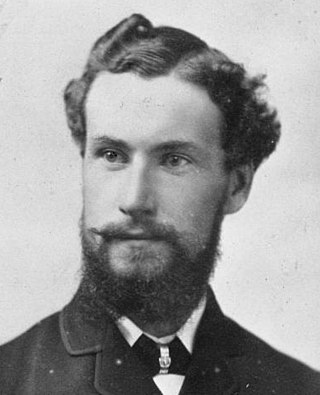Related Research Articles

William Gray Young was a New Zealand architect in the early 20th century, designing buildings such as Knox College in Dunedin, the Wellington railway station and Wellington's Elliott House. He was president of the New Zealand Institute of Architects from 1935 to 1937.
Sir Ian Charles Athfield was a New Zealand architect. He was born in Christchurch and graduated from the University of Auckland in 1963 with a Diploma of Architecture. That same year he joined Structon Group Architects, and he became a partner in 1965. In 1968 he was a principal partner in setting up Athfield Architects with Ian Dickson and Graeme John Boucher (Manson). Athfield died in 2015 due to complications from a routine procedure which resulted in pneumonia, at the Wellington Hospital, where he was being treated for prostate cancer.

The Ministry of Foreign Affairs and Trade (MFAT) (Māori: Manatū Aorere) is the public service department of New Zealand charged with advising the government on foreign and trade policy, and promoting New Zealand's interests in trade and international relations.

The New Zealand Ministry of Works and Development, formerly the Department of Public Works and often referred to as the Public Works Department or PWD, was founded in 1876 and disestablished and privatised in 1988. The Ministry had its own Cabinet-level responsible minister, the Minister of Works or Minister of Public Works.
William Hildebrand Alington is a New Zealand modernist architect, whose work has been awarded nationally, and recognised internationally.

Stanley William Toomath was a New Zealand architect who practised mainly in Wellington. He was a founding member of the Architectural Group in Auckland in 1946, a life member of the Wellington Architectural Centre and a Fellow of the New Zealand Institute of Architects. Both the founding of the Group and the Architectural Centre were important factors in New Zealand's modernist architectural history.
James Albert Beard was a New Zealand architect, town planner, and landscape architect.

Napier Girls' High School is a state secondary school on Clyde Road, Napier, New Zealand. It is one of the oldest schools in New Zealand for girls, and has a current school roll of about 1000.
New Zealand design is a product both of indigenous Māori culture and of European (pakeha) traditions and practices. The concept of design applies to Māori kaupapa as well as to other cultural spheres.
Te Puni Kōkiri is the principal policy advisor of the Government of New Zealand on Māori wellbeing and development. Te Puni Kōkiri was established under the Māori Development Act 1991 with responsibilities to promote Māori achievement in education, training and employment, health, and economic development; and monitor the provision of government services to Māori. The Māori name means "a group moving forward together".

Te Kāhui Whaihanga New Zealand Institute of Architects (NZIA) is a membership-based professional organisation that represents 90 per cent of all registered architects in New Zealand, and promotes architecture that enhances the New Zealand living environment.

John Campbell was a New Zealand architect, responsible for many government buildings in New Zealand, among them the Dunedin Law Courts, the Public Trust Building in Wellington, and Parliament House. From 1909 until his retirement in 1922 he held the position of government architect.
Francis Gordon Wilson was an Australian born, New Zealand architect. Wilson oversaw the design of New Zealand’s state housing programme from the 1930s onwards. He was the New Zealand Government Architect at the time of his death.
John Thomas Mair was a New Zealand architect. From 1923 until his retirement in 1941 he held the position of Government Architect.

The New Zealand Institute of Architects Gold Medal is an award presented annually by the Te Kāhui Whaihanga New Zealand Institute of Architects (NZIA) to a New Zealand architect.

Laurence Jeremy Elder Salmond was a New Zealand conservation architect. He received the NZIA Gold Medal, the highest honour in New Zealand architecture, in 2018.

Fergus George Frederick Sheppard was a New Zealand architect, who served as the chief government architect from 1959 until his retirement in 1971. During his time in this capacity he was involved with the design of the Beehive, among hundreds of other public buildings.
References
- 1 2 3 Architects (www.nzia.co.nz), NZ Institute of. "The government architect's office: 1940–1992". NZ Institute of Architects (www.nzia.co.nz). Retrieved 2021-12-22.
- 1 2 Noonan, Rosslyn J; New Zealand; Ministry of Works and Development (1976). By design: a brief history of the Public Works Department Ministry of Works 1870-1970. Wellington: Ministry of Works and Development. OCLC 229355033.